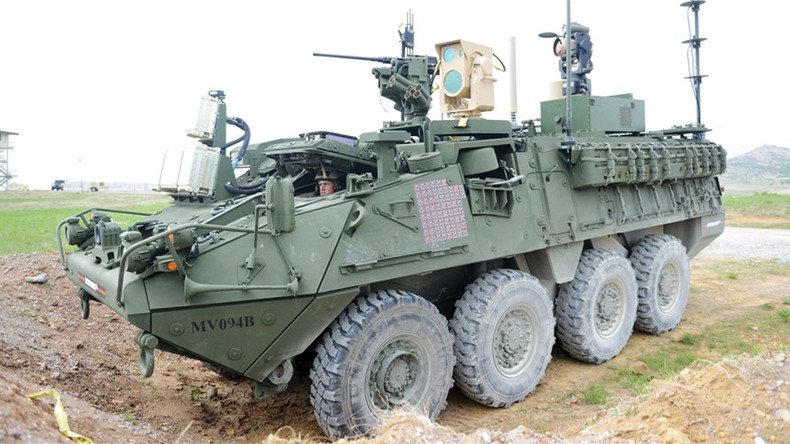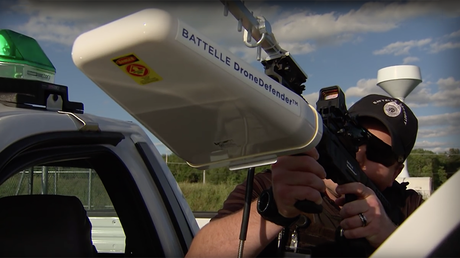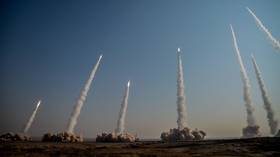Zapping ISIS: US Army tests drone-killing laser weapon

Amid concerns about Islamic State’s use of weaponized hobbyist drones, the US military is testing a laser weapon designed to take out the aerial menace, and small enough to be mounted on a Stryker armored vehicle.
The Mobile High Energy Laser (MEHEL) fires a 5-kilowatt beam that can either scramble the drone’s circuits and sever its communications with ground control – a “soft kill” – or destroy it outright in a “hard kill,” according to the military publication Stars and Stripes.
Vehicles equipped with the MEHEL took part in the 10-day Maneuver Fires Integration Experiment exercises at Fort Sill, Oklahoma last week. A total of 50 drones were shot down, some just a few seconds after being engaged, Army spokeswoman Monica Gutherie said.
If you can't give me sharks with laser beams attached to their heads, I guess Strykers will have to do. https://t.co/8RjuFVr6mC
— Doctrine Man (@Doctrine_Man) April 20, 2017
The MEHEL is mounted on top of the 16-ton Stryker wheeled infantry vehicle, outside the commander’s hatch, where it replaces a machine gun mount. It is powered by externally mounted batteries, which can be recharged by the vehicle, Gutherie said. Technology that would allow the laser to use the vehicle’s power source directly is still in development.
Two variants of MEHEL-equipped Strykers were sent to Europe in March, Stars and Stripes revealed. The US has sent thousands of troops and hundreds of vehicles to NATO countries in Eastern Europe, under the pretext of “deterring Russian aggression.”
Drones are detected by radar, and a camera included in the system displays the target on the screen, enabling the operator to aim the laser. The artillery then goes after the ground control, according to Lieutenant-Colonel Jeff Erts of the Fires Battle Lab at Fort Sill.
Islamic State (IS, formerly ISIS/ISIL) has used small commercially available quadcopters on the battlefields of Iraq and Syria, both as scouts and as improvised bombers, dropping explosives on US and Iraqi forces. In February, Iraqi troops in Mosul shot down a drone equipped with grenades that had badminton birdies glued on as stabilizers.
The Pentagon has shrugged off the improvised drones as of “limited operational effect on the battlefield,” in the words of Operation Inherent Resolve spokesman Colonel John Dorrian.
However, both the Department of Defense and Homeland Security bought some 100 portable drone jammers last year. The 15lb DroneDefender disrupts the GPS signals and can take out drones as far as 400 yards away.
Just a couple of years ago, laser weapons were so big they had to be mounted on warships and special trucks, Paul Scharre, director of the Future of Warfare Initiative at the Center for a New American Security in Washington, told Stars and Stripes. It may take as long as a century before they can truly alter a battlefield landscape, he added, but the MEHEL is a step in that direction.
“Instantaneous effects and perfect accuracy with unlimited magazines completely changes the way we think about munitions in combat,” he said.












